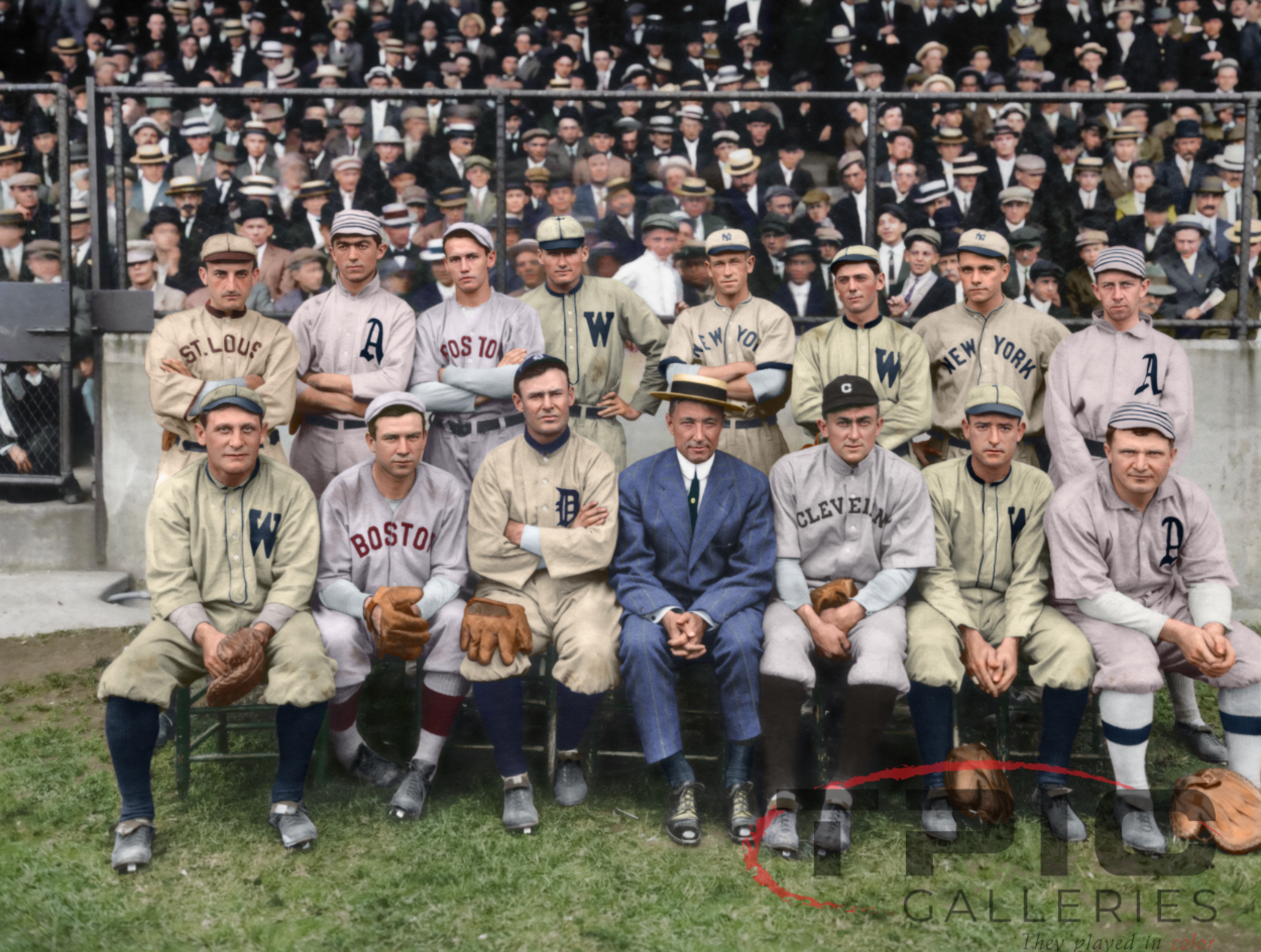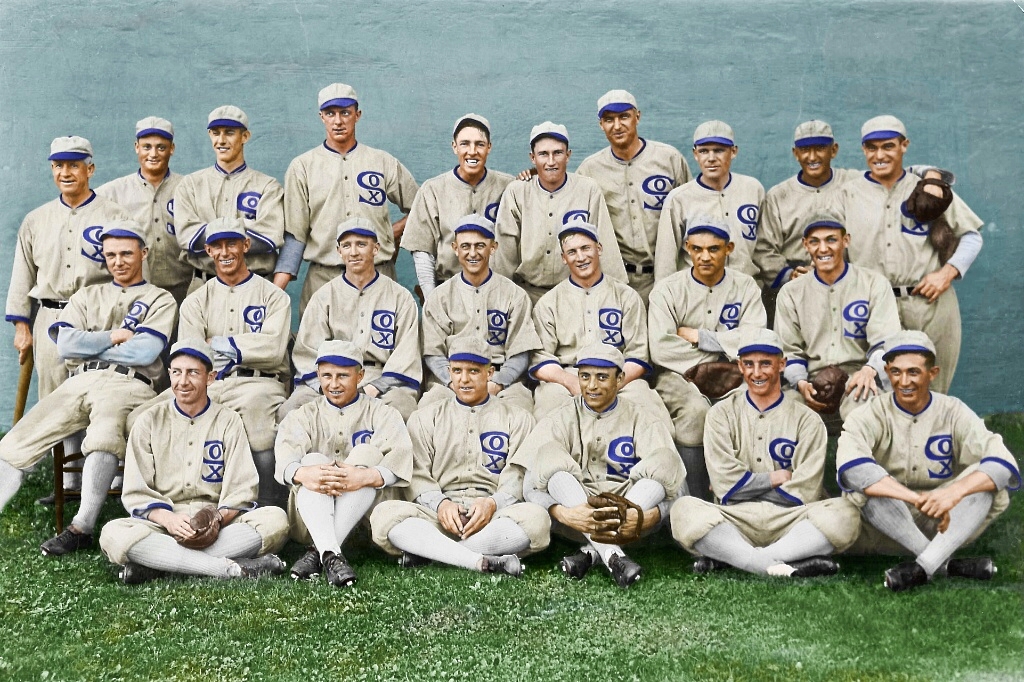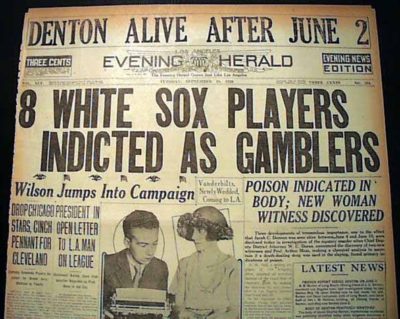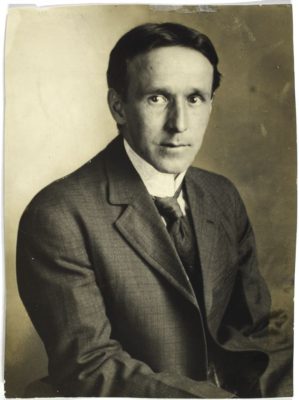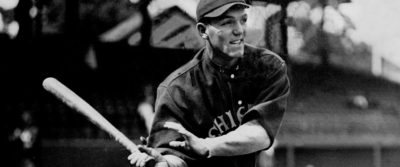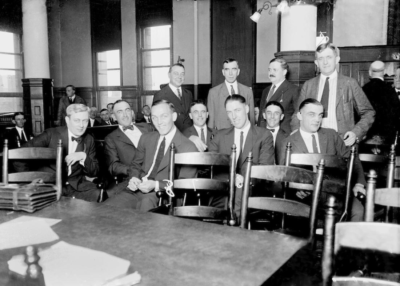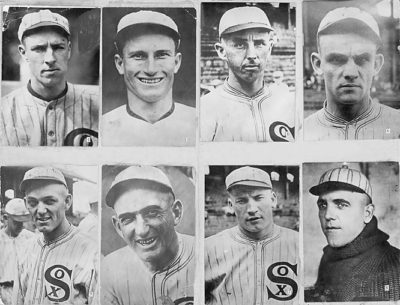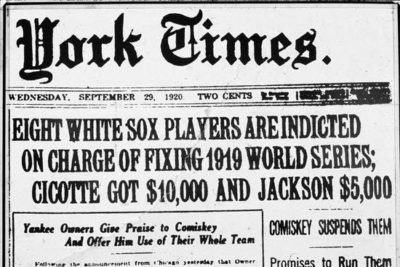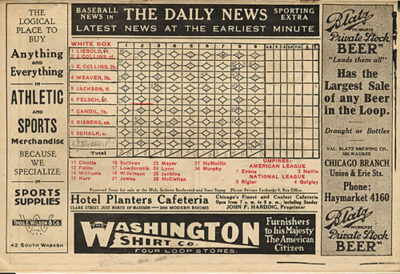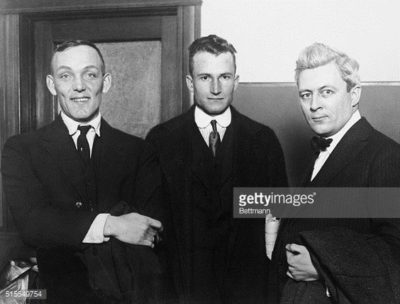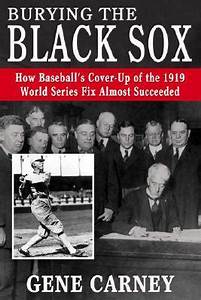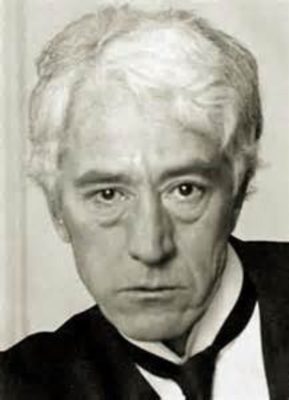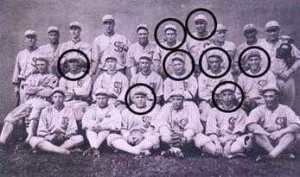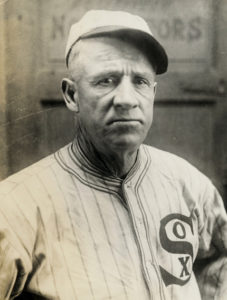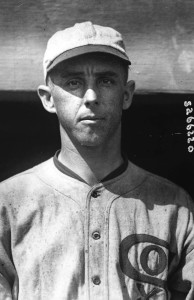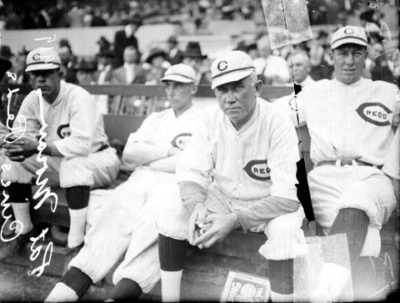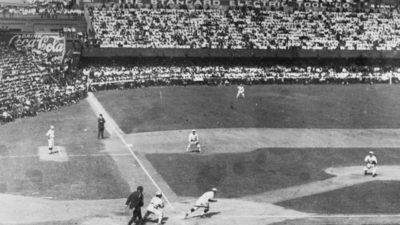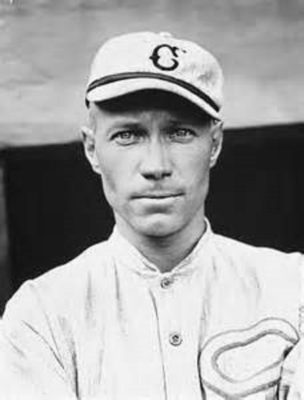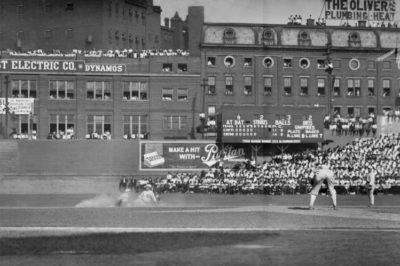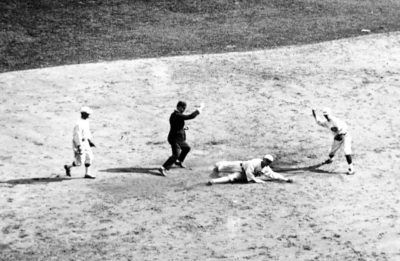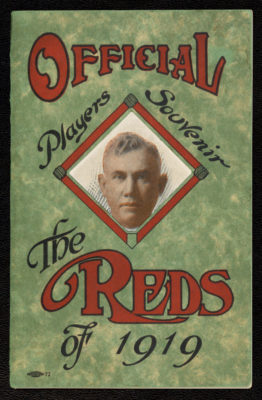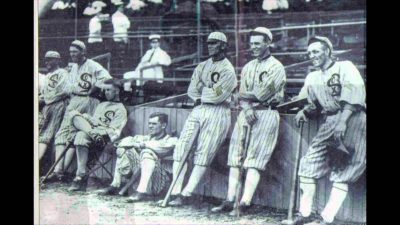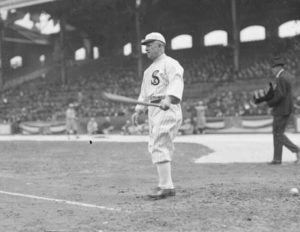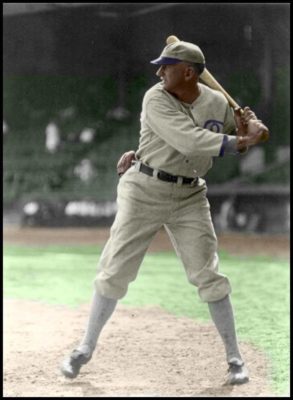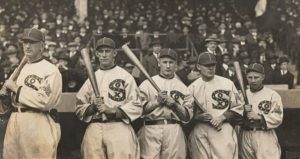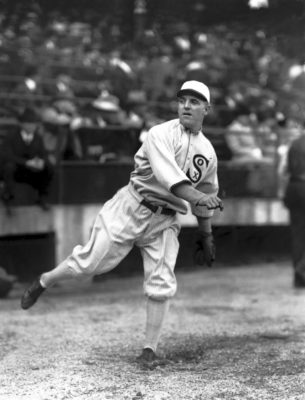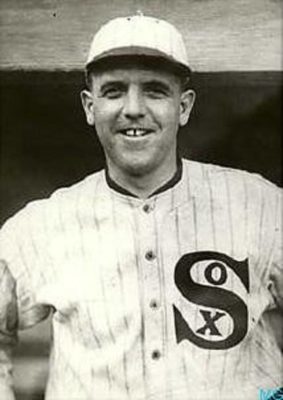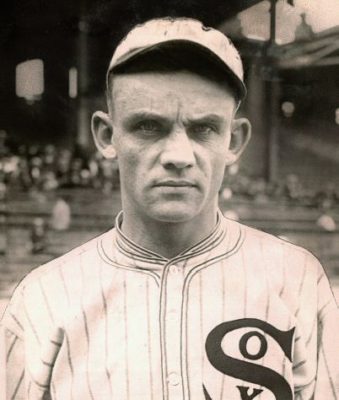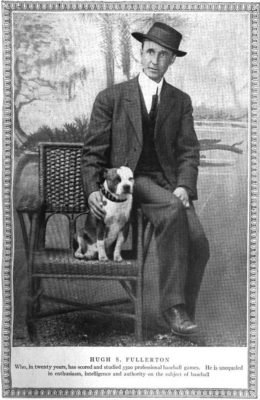Featured Photo Above:
Addie Joos Benefit Game, July 24, 1911
(Color Restoration by Chris Whitehouse of They Played in Color website)
Baseball History Comes Alive Now Ranked As a Top Five Website by Feedspot Among All Baseball History Websites and Blogs!
(Check out Feedspot's list of the Top 35 Baseball History websites and blogs)

Guest Submissions from Our Readers Always Welcome! Click for details
Subscribe to Old Baseball Photos and Essays for automatic updates (sign-up block found in right side-bar)
As a Free Bonus for subscribing, you’ll get instant access to my two Special Reports: Memorable World Series Moments and Gary’s Handy Dandy World Series Reference Guide!
Black Sox and 1919 World Series Photo Gallery
Click on any image below to see photos in full size and to start Photo Gallery:
Another Look at the Black Sox Scandal: Sportswriter Hugh Fullerton’s “Seven Suspicious Plays”
Those of you who read my last post on the Black Sox scandal, Another Look at the 1919 World Series will remember I tried to offer up some “food for thought” in that post.
I honestly don’t know what really happened in that infamous Series – which we all can agree was baseball’s darkest hour. I just have a hunch that the conventional wisdom doesn’t quite tell us the entire story. One hundred years later, my only purpose is to take a fresh look at the known facts and try to assess the situation objectively and unemotionally. Certainly feel free to agree or disagree with me.
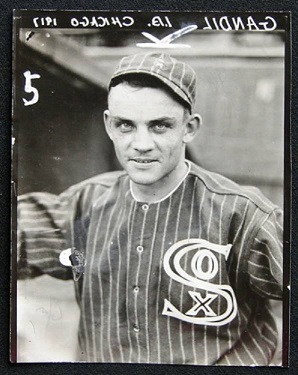
In the featured photo above, we see the entire 1919 White Sox team. They seem to be happy. Even Chick Gandil has a rare half-smile! See below for complete player identifications.
One aspect of the scandal that I’ve always found rather odd is the “Seven Suspicious Plays” compiled by sportswriter Hugh Fullerton.
Hugh Fullerton’s Role
Hugh Fullerton did more than anyone to break the story through his column in the Chicago Herald and Examiner, including enduring deaths threats. Rumors of a “fix” filled the air as the opening game of the World Series approached; so Fullerton, like many others in the press box, was observing the action with a sharp, skeptical eye. With that as his mindset, it was easy to spot what appeared to be “suspicious play.” But isn’t it odd that Fullerton, sitting alongside Christy Mathewson, came up with only seven for the entire eight-game series?
The Seven Suspicious Plays
The most controversial of Fullerton’s “seven suspicious plays” occurred in the fourth inning of Game Four, when Eddie Cicotte errantly deflected a strong throw to the plate by Joe Jackson, allowing an important run to score. It soon became conventional wisdom that Eddie did it deliberately. Those looking for evidence of “crooked play” always cite this as “Exhibit A.”
But Chick Gandil claimed that he was yelling at Eddie to cut off the throw, viewing it as the proper play. And here’s the real kicker: “Clean Sox” Eddie Collins, the future Hall-of-Famer, saw it first-hand from his position at second base. He later vindicated Cicotte, saying the attempted cut-off was indeed the correct play. A few batters earlier, Eddie had himself made a great play on a ball hit up the middle by Morrie Rauth. Even catcher Ray Schalk said, “Eddie gave his best all the way.”
Another of Fullerton’s disputed plays involved Shano Collins, who was never accused of anything. One involved Risberg backing up on an infield single; another had Williams going into a streak of wildness in the fourth inning of Game Two; two others were mound misplays by Cicotte, who was not known to be a good fielder. His .942 fielding average is the thirty-sixth worst all-time.
Only Seven Suspicious plays in an Eight-Game Series?
And that’s it. What World Series has never had a few miscues, errors, or streaks of wildness? None of these seven plays directly involved Chick Gandil, the so-called ring leader, or even Happy Felsch. Most objective historians clear Jackson and Weaver of crooked play. McMullin had only two at-bats, going one-for-two, and never touched the ball. So just who was doing all the “fixing”? When did they do it?
If you read my previous post, you’ll remember that other eye-witnesses, including the official scorer and the umpires on the field, thought the Series was played “on the level.”
Are we to believe that these seven plays alone resulted in a “thrown” eight-game World Series? I guess it’s possible that the Eight Men Out were such good “actors” that they could somehow pull it off; and baseball lifers, watching closely for crooked play, wouldn’t even notice. But, in the confused mental state they were in, somehow I tend to doubt it.
My Conclusion
Here’s a reprint of the conclusion from my previous post:
“As the1919 World Series approached, the entire sordid episode became a blurred, surreal sequence of events where no one really knew what anyone else was doing or thinking. A few may have cracked under the intense mental stress, as Chick Gandil implied in his 1956 interview.
Conflicting stories and emotions were rampant. Was it really worth the risks? Who was trying? Who wasn’t? Was it too late to call it off? They took money. Now what? Was it too late to give it back? They made a “devil’s bargain” with the gamblers. What happens when you double-cross gamblers? Death threats!
All this and much, much more had to be mentally tormenting them before the first pitch was thrown. Who could possibly concentrate on winning baseball? On a national stage, no less. And against a great team like the Reds.
The situation was ripe for an upset…
The Black Sox were an extraordinary mix of arrogance, stupidity, naivety, greed, and, yes, talent. Conspiring with gamblers to throw the World Series was a serious offense. They got what they deserved and they knew it. The acceptance of dirty money irreversibly tarnished their reputations and made their future protestations of innocence ring hollow. (“We took their money but we double-crossed them by trying to win.” Right…Who’s going to believe that!) Their fate was sealed. As with a tar baby, once they touched the gamblers, they could never break free.”
Again, I don’t know what really happened. I only offer this up as more “food for thought.” But are you starting to feel, as I do, that perhaps there’s more to this sad story than meets the eye?
1919 White Sox Player Identifications
Top Row, L-R: Kid Gleason(Mgr.), John Sullivan (P), Roy Wilkinson (P), Grover Lowdermilk (P), Swede Risberg (SS), Fred McMullin (3B), Bill James (P), Eddie Murphy (OF), Joe Jackson (OF), Joe Jenkins (C). Middle Row, L-R: Ray Schalk (C), Shano Collins (OF), ?, Dickie Kerr (P), Hap Felsch (CF), Chick Gandil (1B), Buck Weaver (3B). Front Row, L-R: Eddie Collins (2B), Nemo Liebold (OF), Eddie Cicotte (P), Erskine Meyer (P), Lefty Williams (P), Byrd Lynn (C).
Gary Livacari
Photo Credits: All from Google search
Information: Excerpts sourced from “Burying the Black Sox,” by Gene Carney
Check out my two books, both now available on Amazon in e-book and paperback: “Paul Pryor in His Own Words: The Life and TImes of a 20-Year Major League Umpire”and “Memorable World Series Moments.” All profits go to the Illinois Veterans Foundation
Cast Your Vote in Our New Poll Question: How Do You Feel About Judge Landis’ Verdict Against the “Eight Men Out”? https://wp.me/p7a04E-5IF
We are a participant in the Amazon Services LLC Associates Program, an affiliate advertising program designed to provide a means for us to earn fees by linking to Amazon.com and affiliated sites. Click here to view Amazon’s privacy policy
